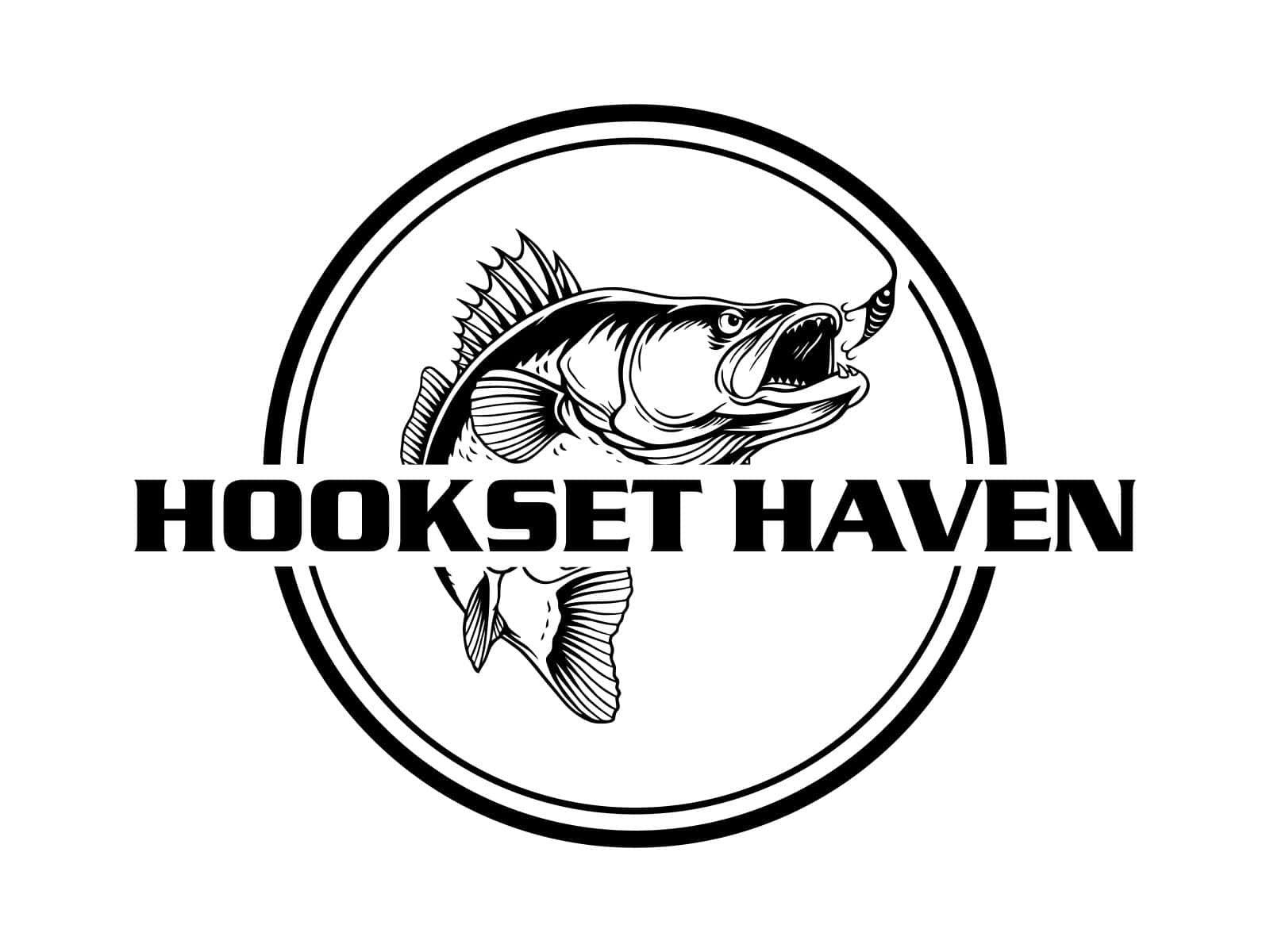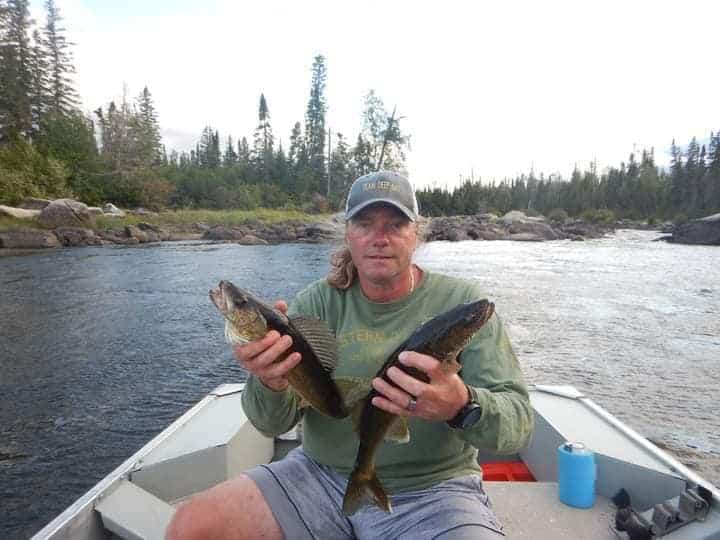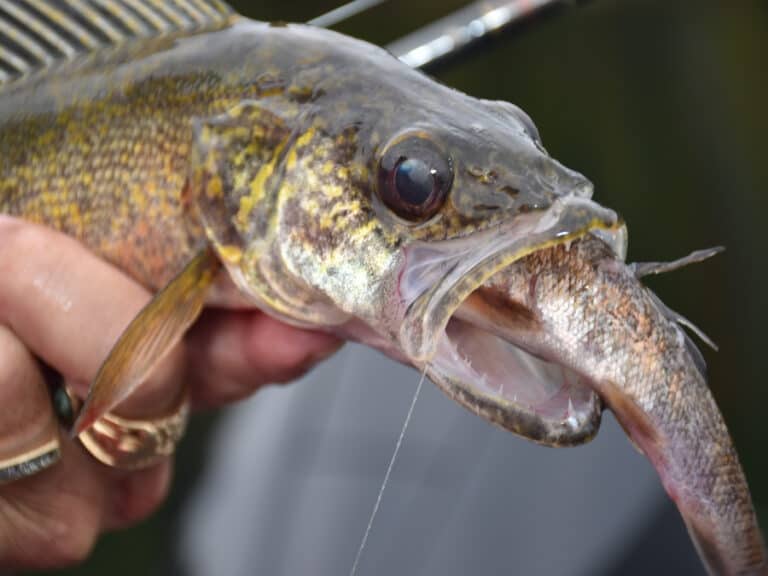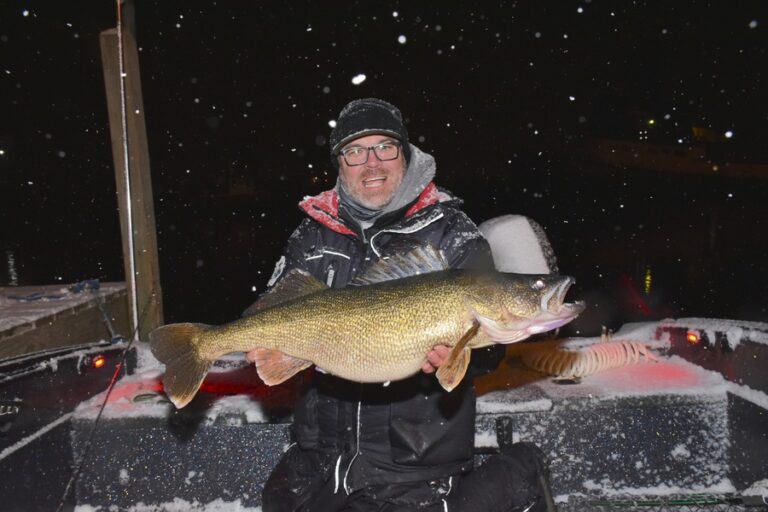Where to Catch Walleye on Windy Days (Seasonal Guide)
On windy days, walleye will be where the wind pushes against the shore or windbreaks. Focus on windward shorelines, deep weed edges, ledges, humps, and drop-offs where wind currents and wave action channel baitfish.
Look for areas with underwater hills or places where the depth of the water changes, as walleye like to hang out there to catch their food.
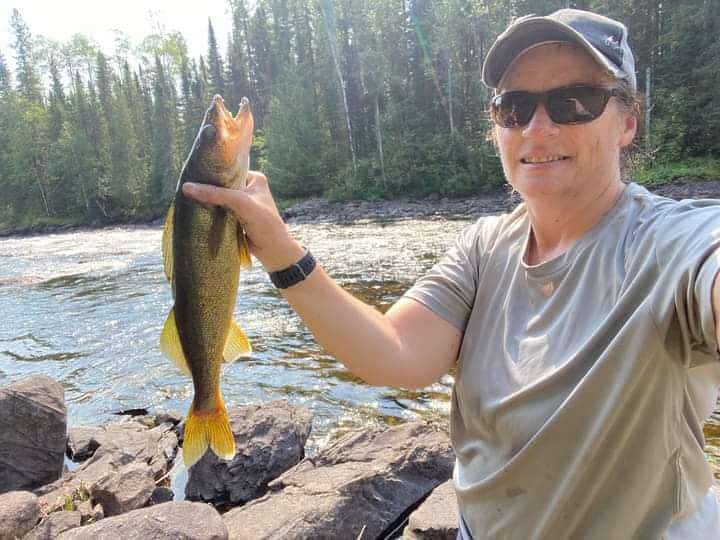
Table of Contents
Where to Catch Walleye on Windy Days
Walleye fishing can be excellent on windy days as the wind concentrates baitfish, increasing walleye feeding activity. Trolling along wind-swept shorelines, vertical jigging over deep structures, and drift fishing with controlled boat movement produce the best walleye fishing in these conditions.
Walleye will congregate where wind-drive current and wave action push nutrients, oxygen, and baitfish against a windbreak like a ledge or shoreline. Deep weed edges, ledges, deep humps, narrows, inside turns, deep rock, and drop-offs are fantastic walleye spots on windy days.
The shoreline of a windswept patch of lake can also be a great spots. Walleye will stage on the windward (windy) side of these windbreaks, feeding on disoriented or injured baitfish trapped here. Troll or cast your baits at angle alongside these windbreak structures.
Table: Where to Catch Walleye on Windy Days
| Season | Location Features | Depth Range | Tips |
|---|---|---|---|
| Spring | Shallow, windward shores; spawning areas with gravel or sandy substrates | 4-10 feet | Focus on areas where wind stirs up shallow waters. |
| Summer | Deep waters near structures like reefs or drop-offs; windward sides of underwater humps | 15-30 feet | Target places where wind-driven currents meet underwater structures. |
| Fall | Steep breaklines; windward sides of underwater structures | 10-40 feet | Explore varying depths, especially on the windward side of large structures. |
| Winter | Areas under ice with currents like points, narrows, or mid-lake humps | Varies, usually 20-30 feet | Be cautious of ice conditions; look for spots with wind-created under-ice currents. |
Click here to learn how weather impacts walleye fishing. To learn how to catch walleye on cloudy days, check out this guide. To learn how to catch walleye on windy days, check out this guide.
Seasonal Guide: Locating Walleye on Windy Days
Spring
Look for walleye in northern shallow bays where the warmest water on the lake and first green vegetation starts growing. On windy days, focus on the windward shores of these bays, which will accumulate nutrients and disorient baitfish.
Walleye will be water 4-15 feet deep, depending on water clarity and available food. As the spawn gets closer, walleye will position themselves near the creek mouths and provide excellent fishing on windy days.
Summer
In summer, walleye are typically found in deep holes featuring cooler water. On windy days, find deep structure where driven-driven currents converge. Deep reefs, rock piles, humps, and drop-offs are great starters. Transitional zones are great too.
Examples of great walleye transitional zones are sand-to-gravel bottom borders and significant depth changes. These sites will catch wind-driven current trapping nutrients and baitfish. I love fishing in 15-30 feet of water on windy days.
Fall
Fall is one of my favorite seasons to catch walleye as the cooling temps and shortened days trigger walleye to feed heavily to prep for winter. On windy days, fish along windward sides of deep underwater structure and steep breaklines.
I love fishing deep humps, inside turns, drop-offs, and rock piles. Deep weed edges can be great if you find any remaining green vegetation that hasn’t yet died. 10-20 feet deep is a great depth range, especially over a rocky or mixed gravel bottom.
Winter
Ice fishing can be very good on windy days. Walleye love deep rock in main lake basins in winter. On windy days, focus on deep rock, humps, and narrows that funnel current. Walleye love these particular regions.
Look for deep structure in water 20-30 feet of water. The wind has an even larger impact on walleye locations on non-ice-covered bodies of water and rivers. Always look for wind-driven current sites that meet structure.
How Do Walleye Respond to Windy Conditions?
Windy conditions usually make walleye more active as the water gets stirred up. This water agitation upwells nutrients, drives baitfish to predictable locations, and make walleye more likely to feed. The currents and waves created by strong wind action concentrate prey and walleye.
Look for pockets of walleye on windward sections of current breaks like reefs, ledges, and deep weeds. Wind also breaks up light penetration, making walleye more likely to move shallower in the water column to feed during the day.
Table: How Wind Speed Impacts Walleye Fishing
| Wind Speed Range (mph) | Fishing Effectiveness | Recommended Techniques |
|---|---|---|
| 0-5 | Low – Calm conditions may make walleye more cautious | Finesse fishing, light tackle |
| 6-10 | Moderate – Ideal for creating surface disturbance and bait movement | Trolling along windblown shores, light jigging |
| 11-15 | Good – Strong enough to stir up baitfish and activate walleye | Active trolling, drift fishing, targeted jigging |
| 16-20 | Very Good – Creates significant currents and food movement | Drift fishing, using heavier lures for better control |
| 21-25 | Challenging – High wind can complicate boat control, but can be very productive | Heavy tackle for stability, focus on sheltered areas |
| 26+ | Difficult – Often too windy for safe, effective fishing | Not recommended – safety concerns |
Frequently Asked Questions
How does wind affect walleye locations?
Wind impacts where walleye stage by moving current, stirring up water, and pushing around nutrients and baitfish. Look for walleye near windward shores or where wind-enhanced currents are strongest.
What are the best strategies for finding walleye in windy conditions?
To find walleye on windy days, focus on windy shorelines where nutrients and disoriented baitfish accumulate. Some other great spots to fish are drop-offs, ledges, and deep weedlines where baitfish move to escape the windy conditions.
Does the direction of the wind matter when locating walleye?
The wind direction can impact where walleye position themselves. Generally, the windward side of the lake, where the wind blows towards, offers better walleye fishing as it accumulates more baitfish and nutrients. As far as actual wind direction (ex: north, south, east, west), that doesn’t have much bearing.
Should I adjust my walleye fishing depth on windy days?
Windy conditions can cause walleye to move shallower than usual, especially if the wind is stirring up the shallows and bringing food. It’s a good idea to start at moderate depths and move shallower or deeper based on where you find active fish.
What is the best wind for walleye fishing?
The best wind for walleye fishing is often a moderate, steady breeze, typically ranging from 10 to 20 mph. Such winds create enough surface disturbance to stir the water and bring food sources like baitfish into motion.
